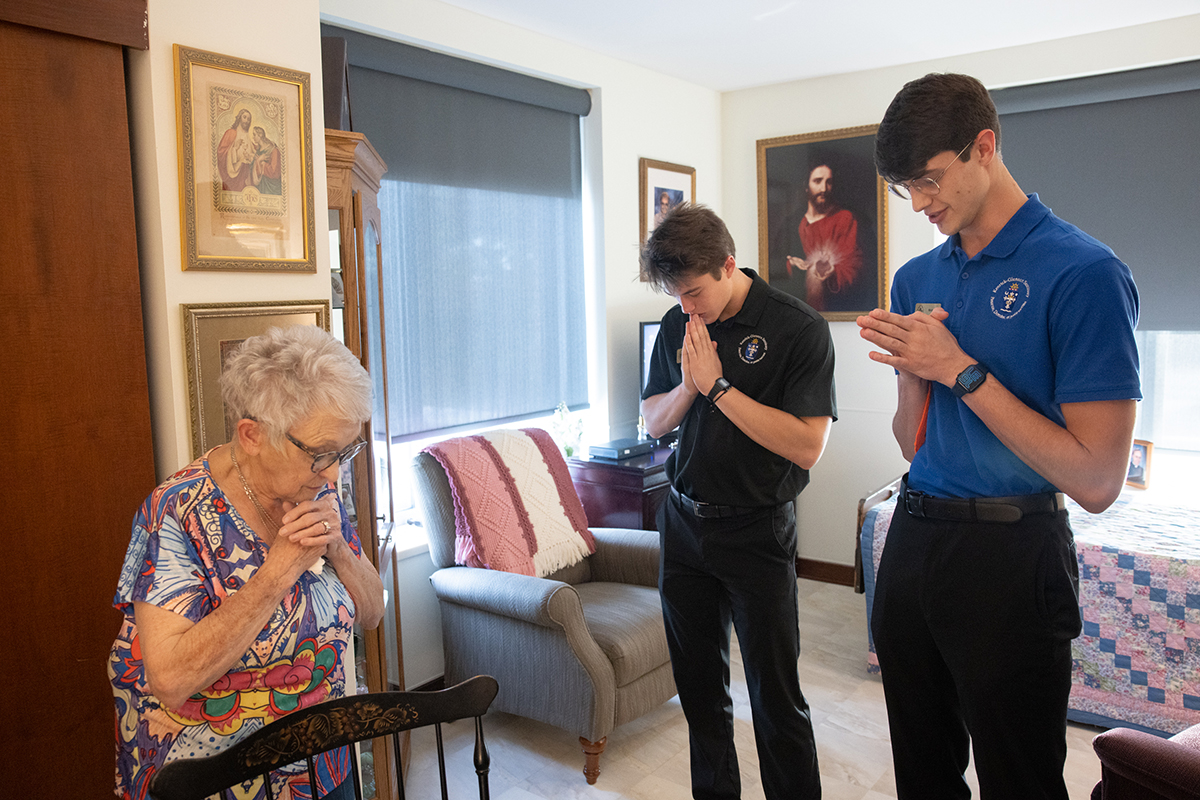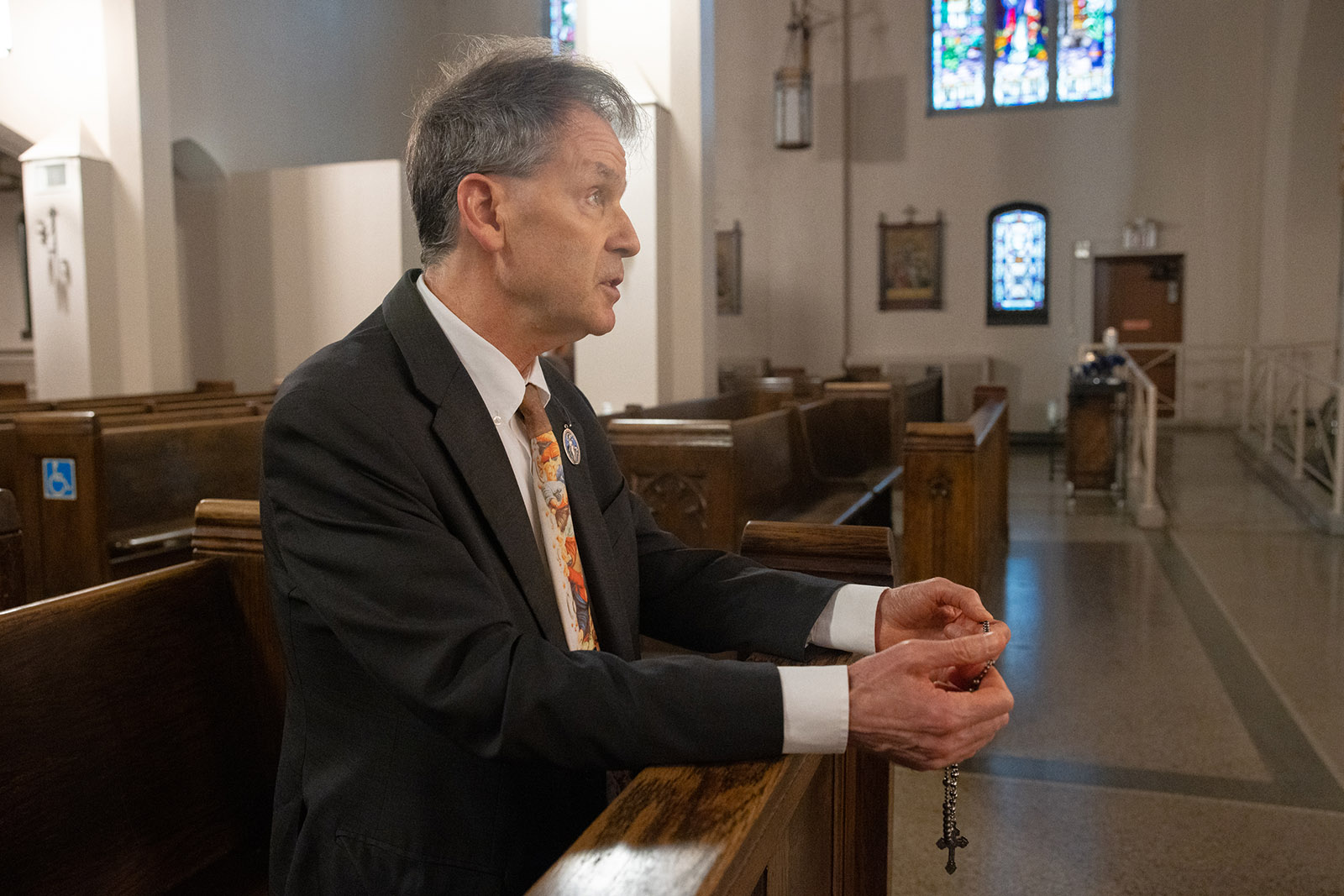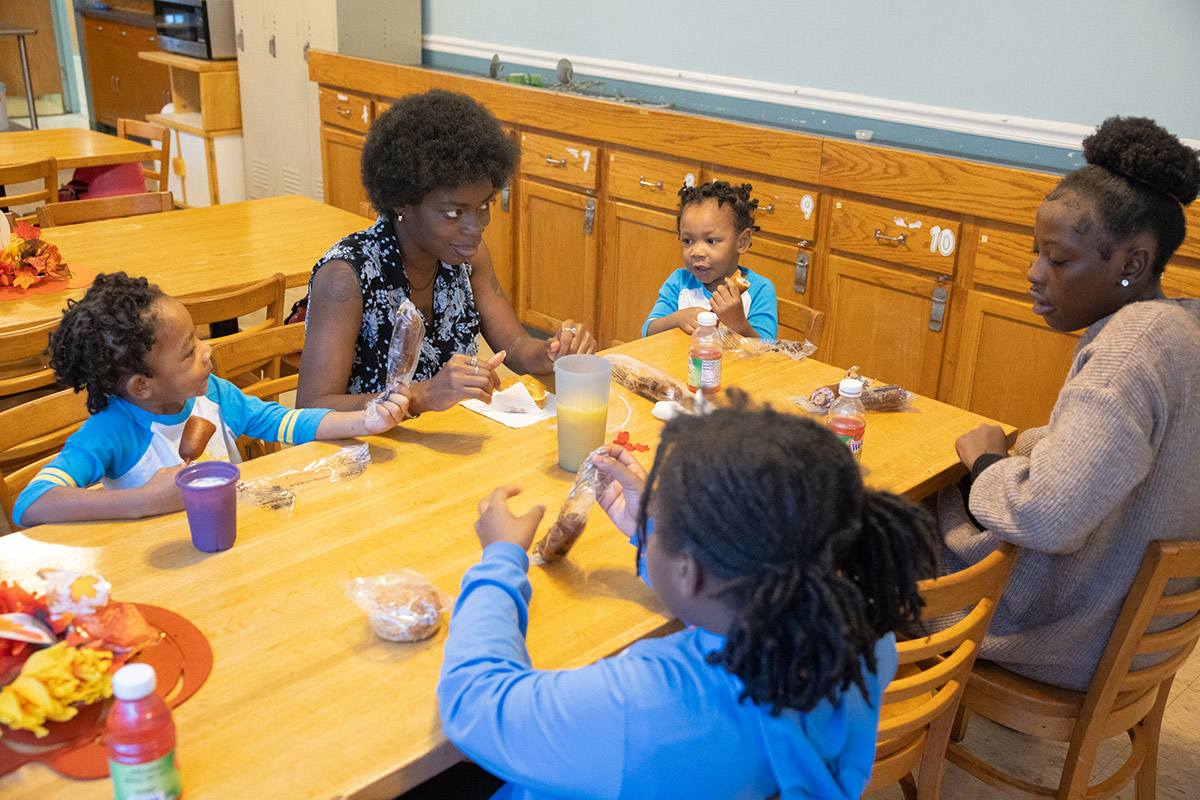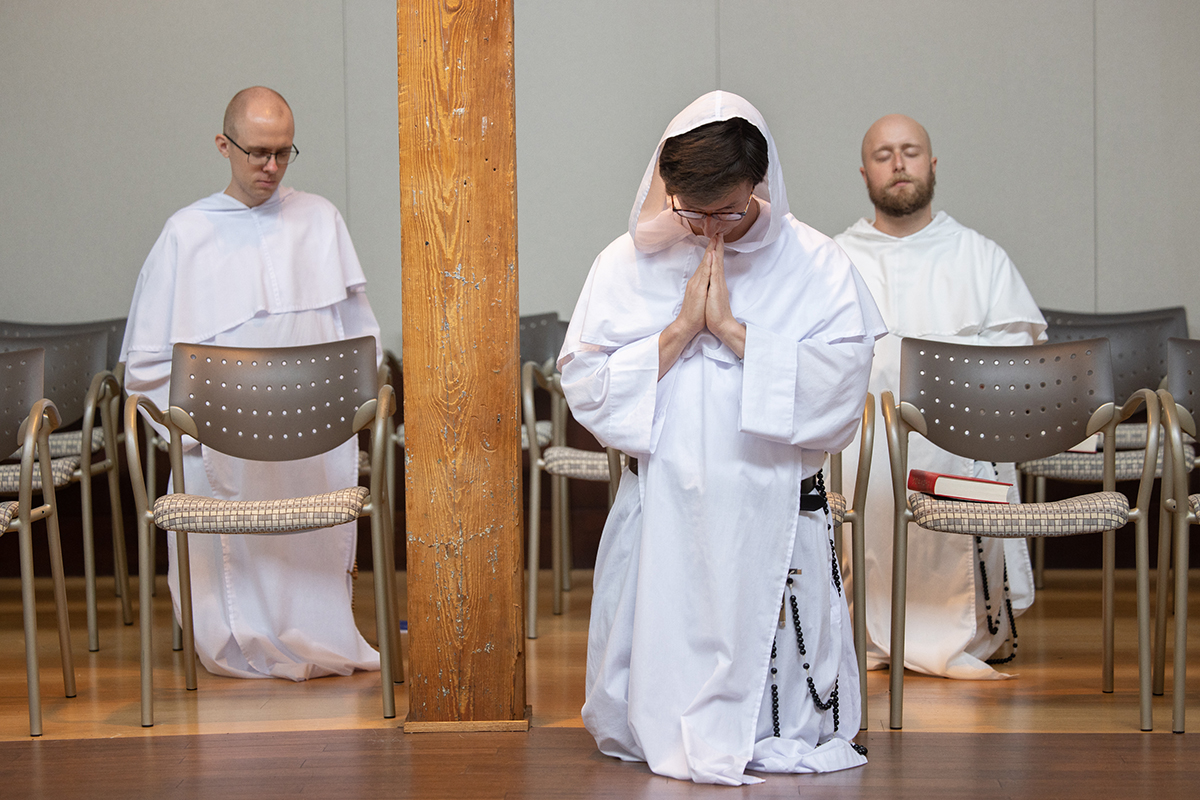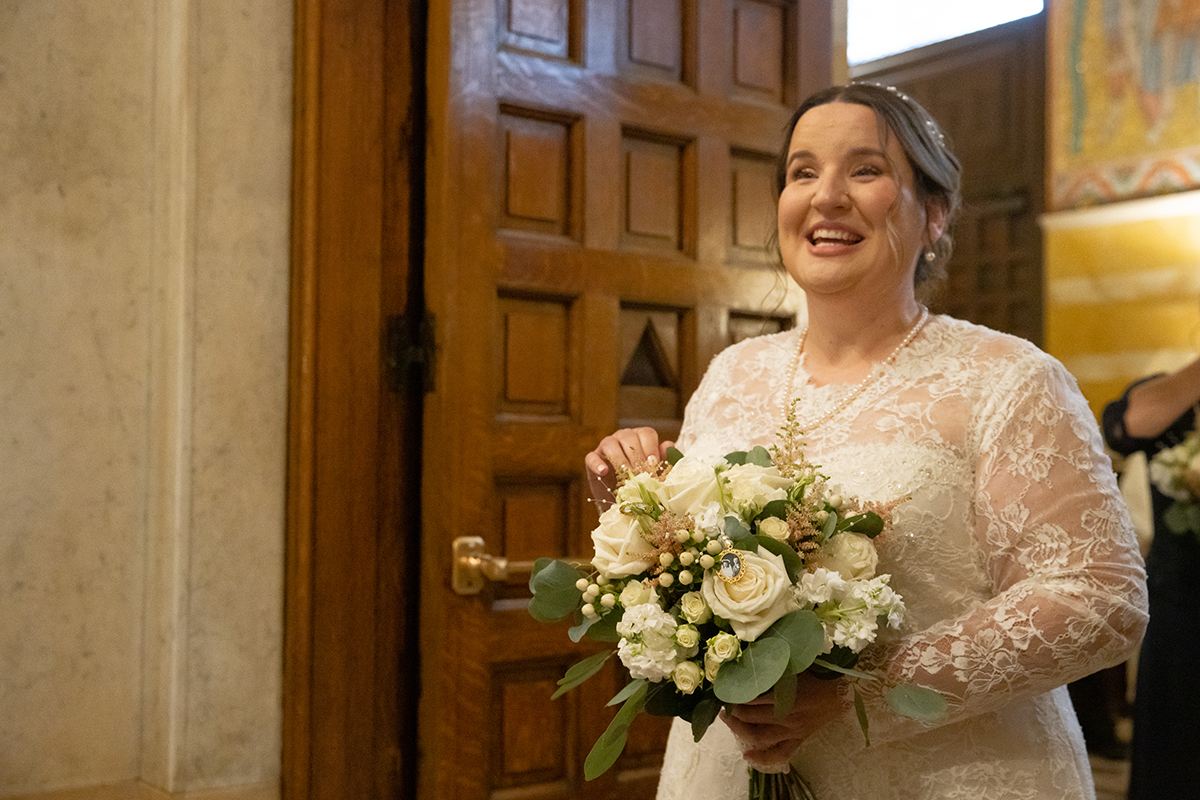Why consecrated life matters: Religious sisters describe their lives as a response to God’s call to participate in His holiness
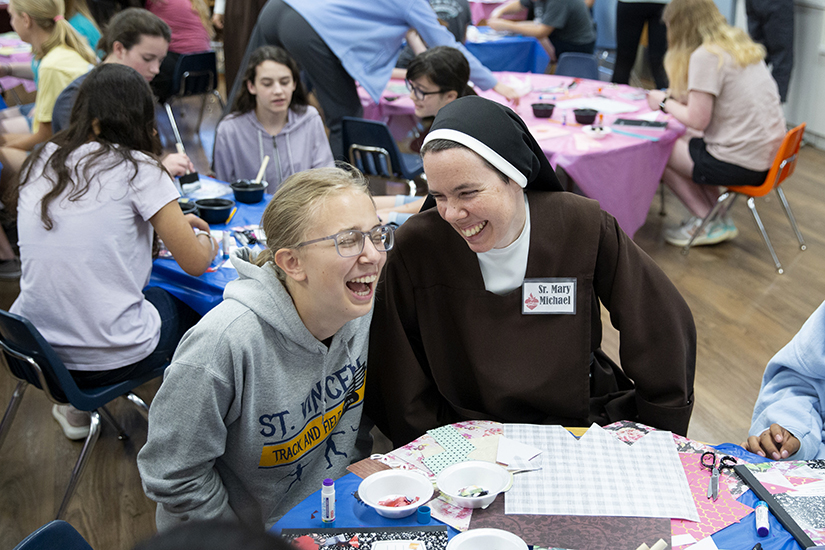
Consecrated life comes in many forms; The Carmelite Sisters of the Divine Heart of Jesus are just one example of having a special union with the Lord to bring the light of the Church to the world
Emma Ackerman had a good Catholic upbringing, but the idea of consecrated religious life was never part of her future plans.
That is, until the spring of her senior year of high school. Her grandmother, with whom she was close and helped with her care toward the end of her life, had passed away. It was a turning point. Ackerman began attending daily Mass and praying the Rosary. And somewhere in the midst of that, she felt God tugging at her heart.
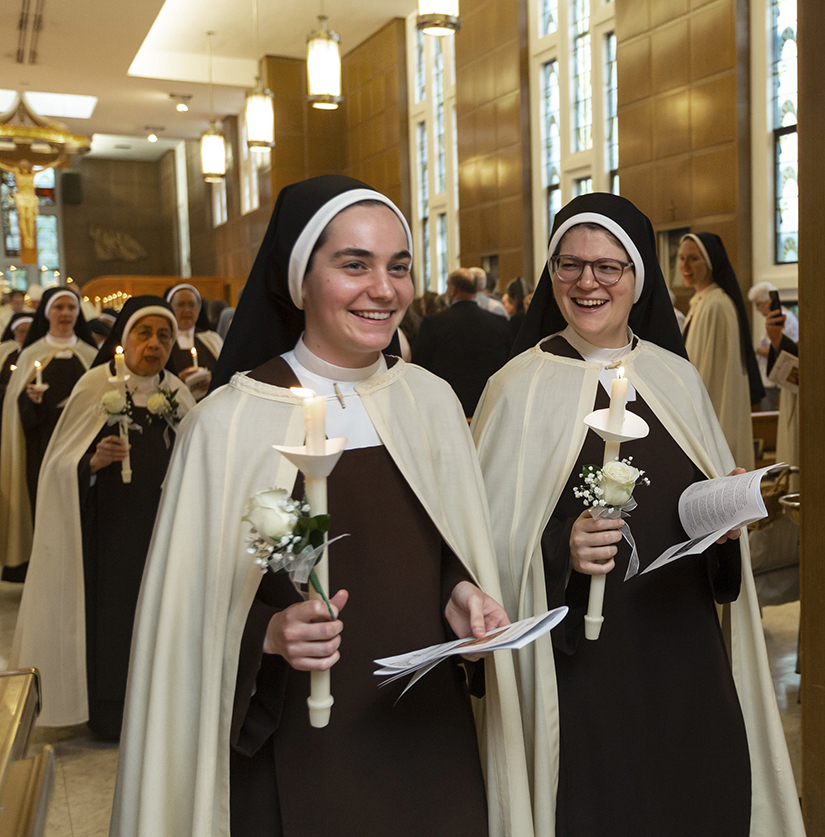
“I was starting to realize I needed to think more about religious life, as I am growing in relationship with the Lord,” she said, adding: “when we love someone … I just wanted to do His will.”
Two years later in 2019, Ackerman entered the Carmelite Sisters of the Divine Heart of Jesus, taking the religious name Sister Mariana Joy. On July 2, she and another sister, Sister M. Magdalene Therese, professed their first vows with the community.
Set aside for a holy purpose
The Catholic Church recognizes many forms of consecrated life, including consecrated religious life. (See related.) All of these forms are united in their mission to serve the Lord, whether it be by a life dedicated to apostolic service, cloistered prayer or another type of apostolate.
To consecrate means to set aside or devote to a holy purpose. When a man or woman accepts Christ’s invitation to leave everything and follow Him in a more radical way, they make vows of poverty, chastity and obedience to closely imitate Jesus.
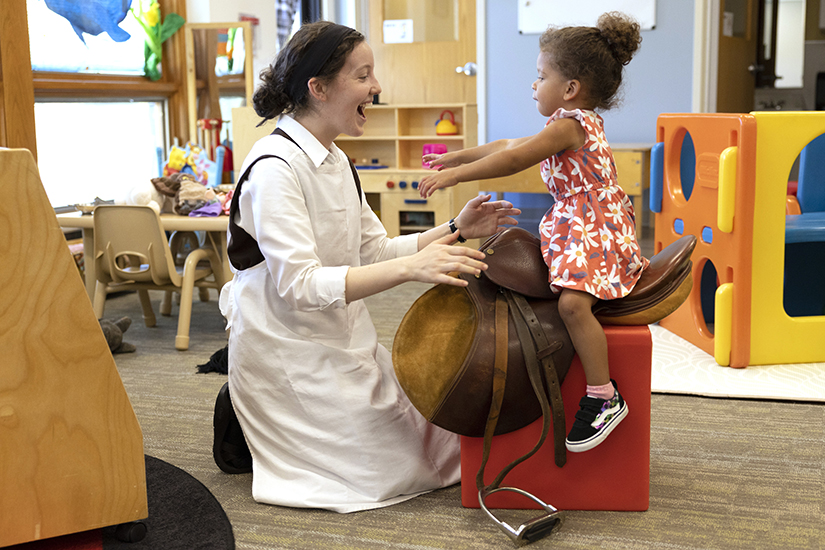
St. John Paul II wrote that the different forms of consecrated life are “the many branches which sinks its roots into the Gospel and brings forth abundant fruit in every season of the Church’s life.”
Canon Law also notes that “the first and foremost duty of all religious is to be the contemplation of divine things and assiduous union with God in prayer” (no. 663).
“It’s that gift of self, of that love that holds nothing back,” Sister Mariana Joy said. “He gives us that through the gift of Eucharist; and through our lives, it’s our gift back to Him.”
‘Peace and joy’
Sister Mariana Joy remembers attending Steubenville youth conferences when she was a high school student at St. John Paul II Preparatory School. Toward the end of the weekend, teens discerning a religious vocation participate in an “altar call,” where they are invited to the stage for prayers.
“There was a little spark of an invitation,” there, she recalled. But when asked if she participated in the altar call, her response was an emphatic “no.”
Her senior year was focused on preparing for college. She found great joy in helping her grandmother, where a love for elder care began to bloom.
After her grandmother’s death, Sister Mariana Joy began visiting the Little Church at her parish, Ascension in Chesterfield, where she prayed the Rosary. That summer, she also prayed a novena to St. Anne, Jesus’ grandmother, asking the Lord to help her understand His will for her life.
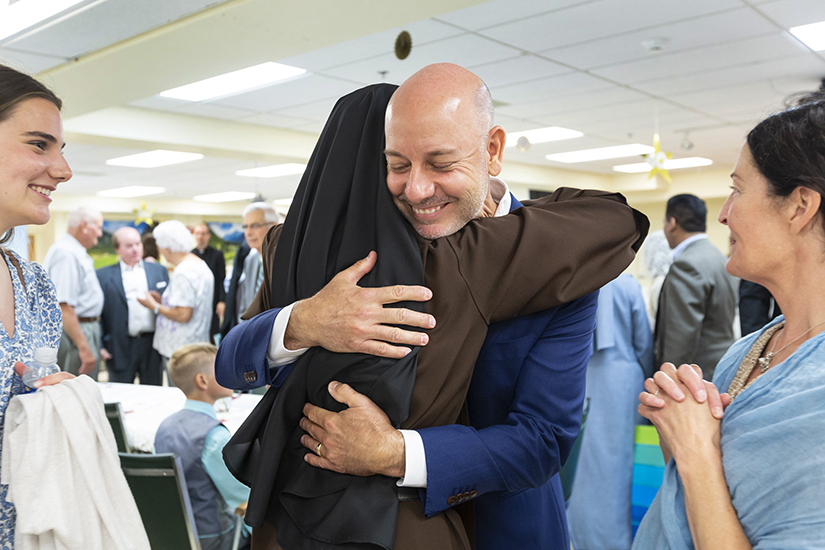
“Shortly after, I found the most peace and joy I have ever experienced, just knowing I was being called to religious life and it would make me happy,” she said. “The Lord, very clearly speaking to my heart, said this is what will make you happy, and this is what I am calling you to.”
After two weeks away at college, Sister Mariana Joy had her answer. A friend who was working at St. Agnes Home in Kirkwood, an apostolate of the Carmelite Sisters that provides assisted living care, invited her to volunteer there.
“I went to Mass there, and just walking into our building I felt like it was coming home,” she said. “I know Jesus had to lead me to the right community. I didn’t think I could be a nurse or work with elderly as a sister, but when I found out sisters could do that, I realized He led me to where my love is.”
The Carmelite Sisters are a contemplative, apostolic community. They live together in community, sharing the space with their apostolates — St. Agnes Home and the Carmelite Child Development Center — but they are not cloistered, a type of religious community in which members live in community and separate themselves from most affairs of the outside world.
‘To the deepest core’
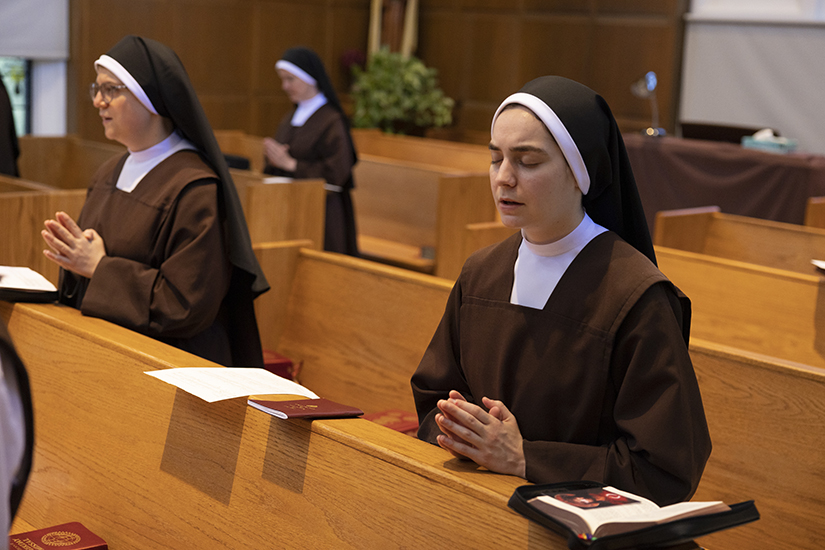
Sister M. Magdalene Therese had wanted to be a teacher. She earned a teaching degree and taught at a public school in the Dallas, Texas, area. She loved her students.
But there was a seed growing inside, something that had been planted when she was in high school. Years ago on a retreat, she met several Nashville Dominican Sisters and was intrigued by the way they lived their lives.
“It was definitely their joy,” she recalled of the encounter. “It just seemed like they were happy — not just on the outside, but to the deepest core of their person. That they were being filled with something that I wasn’t being filled with that I desperately wanted.”
A year into teaching, Sister M. Magdalene Therese knew something — or perhaps Someone — was tugging at her to learn more about consecrated religious life. She visited the Nashville Dominican Sisters for several retreats. It was a confusing time, especially since she loved teaching, but that’s all part of discernment, she later realized.
While on a retreat, an image of a Carmelite habit popped into her mind. She had never met the Carmelites, and knew very little of them. Through her spiritual director, she was connected with the Carmelite Sisters of the Divine Heart of Jesus in St. Louis and arranged to visit for a retreat. She knew this was where God was calling her.
Being consecrated means being set apart for God, she said. “In Canon Law, it says all religious are supposed to seek assiduous union with the Lord and contemplation of divine things. It’s the heart of every religious life, withdrawing from everything to be with Him.”
Withdrawing even means withdrawing from the good — the sisters have limitations on communication with family, for example. “It’s to be able to hear His voice very clearly,” she said. “That is the gift that we give to the Church; just by being His, there’s fruit that blossoms from that for the entire Body of Christ.”
“It’s beautiful being that witness that He is enough,” Sister Mariana Joy said. “It’s spousal union through the profession of our vows and that emptying of ourselves to be completely filled with Him. Through that, we are bound to Him as all souls will be in heaven. But we’re being that witness here and now that He is enough.”
>> What is consecrated life?
St. John Paul II, in a 1996 apostolic exhortation, wrote of the different forms of consecrated life as “the many branches which sinks its roots into the Gospel and brings forth abundant fruit in every season of the Church’s life.”
Consecrated life has several different forms, including monastic life; the orders of virgins, hermit, and institutes completely devoted to contemplation; apostolic religious life, secular institutes, societies of apostolic life, and new or renewed forms of the consecrated life (“Vita Consecrata,” 6-12). Each form is described in the Catechism of the Catholic Church.
Consecrated life is a permanent state of life recognized by the Church, entered freely in response to the call of Christ to the perfection of love and characterized by the making of public vows of poverty, chastity and obedience. The word consecrated means “to make holy,” and is a response to God’s call to participate in His holiness. Each form of consecrated life is unique, but all are united in their mission to serve the Lord, whether it be by a life dedicated to apostolic service, cloistered prayer or another type of apostolate.
To learn more about the forms of consecrated life, read stlreview.com/3yVcqAS.
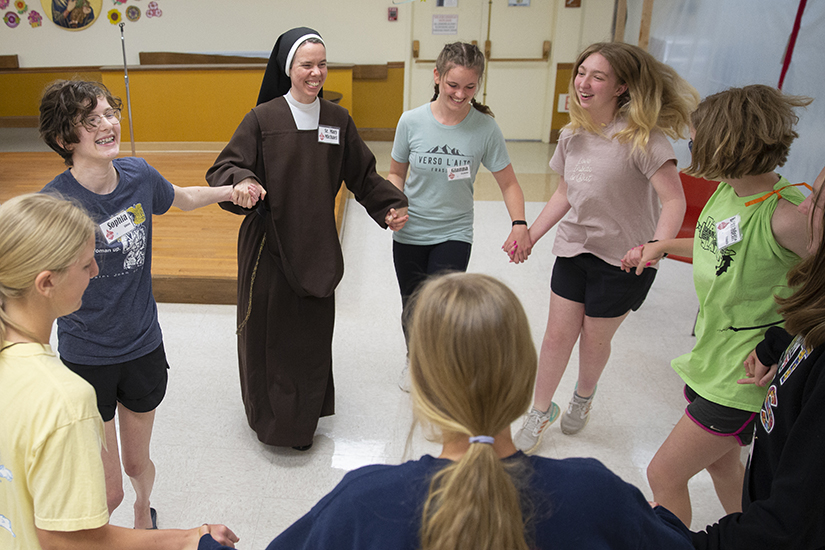
Religious with ties to St. Louis answer God’s call to consecrated life
BY JENNIFER BRINKER | jbrinker@archstl.org | twitter: @jenniferbrinker
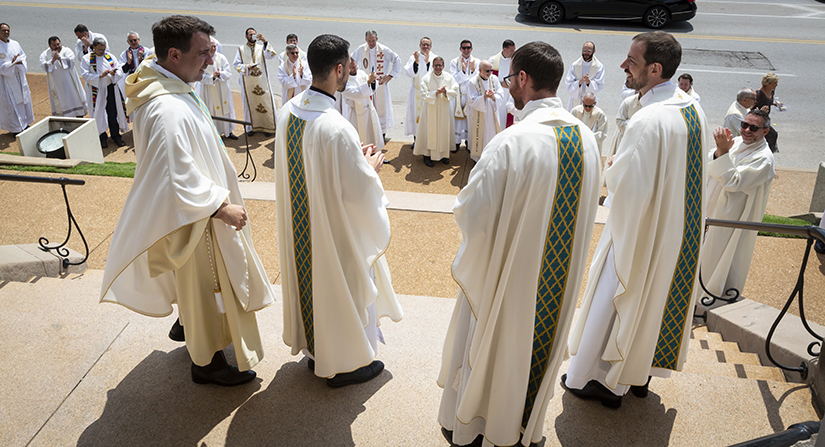
Several religious communities have or will celebrate ordinations or the profession of vows of men and women with ties to St. Louis. This information was provided by the religious communities to the archdiocesan Office of Consecrated Life. They include:
Apostles of the Sacred Heart of Jesus
Sister Allison Zink will profess her first vows on July 30 in Hamden, Connecticut.
Carmelite Sisters of the Divine Heart of Jesus
Sisters Mariana Joy and M. Magdalene Therese professed their first vows, and Sister M. John Paul renewed her vows July 2 in Kirkwood.
Congregation Messengers of Fatima
Brothers Martin Maria Thanh and Anthony Hieu renewed their vows June 25 during the community’s Fatima Days celebration.
Missionaries of Charity
Sister Lilia Rose professed her final vows at the Missionaries of Charity formation house in Washington, D.C., on May 24.
Sisters of St. Francis of the Martyr St. George
Elizabeth Buckley will receive her habit and religious name on Aug. 2; Sister M. Xavier Schulze and Sister M. Pieta Keller will make their perpetual profession on Aug. 2 at St. Mary’s Church in Alton, Illinois.
Sisters of Charity of the Incarnate Word (San Antonio)
Sister Miriam Bannon will make her first profession on Aug. 20 at the Chapel of the Incarnate Word in San Antonio, Texas.
Sisters of Mercy of the Americas
Sister Patricia Anne Baca made her profession of perpetual vows in the chapel of the Mercy Conference and Retreat Center in St. Louis May 2.
Society of Our Lady of the Most Holy Trinity
Sister Ashley Marie Barnett profesd her first vows on July 16 in Corpus Christi, Texas.
Order of Preachers (Dominicans)
Brother Jordan Joesph DeGuire, Brother Peter Martyr Lewitzke, Brother Vincent Hoang Nguyen and Brother Gregory Dunn were ordained as transitional deacons on May 21 at St. Pius V Church in St. Louis. Bishop Edward Rice was the celebrant and ordaining bishop.

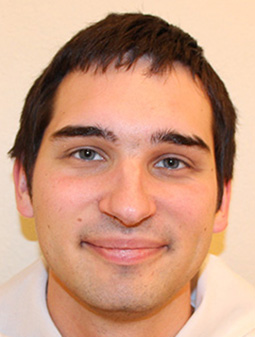

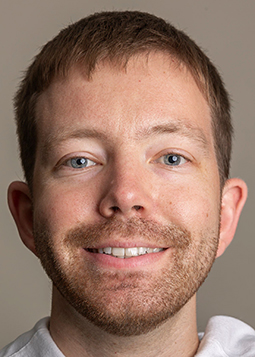
Society of Jesus (Jesuits)
Fathers Thomas Croteau, David Kiblinger, Jonathon Polce and Juan Ruiz were ordained to the priesthood for the Jesuits USA Central and Southern Province on June 11 at St. Francis Xavier “College” Church in St. Louis. Archbishop Mitchell T. Rozanski was the main celebrant and ordaining bishop.

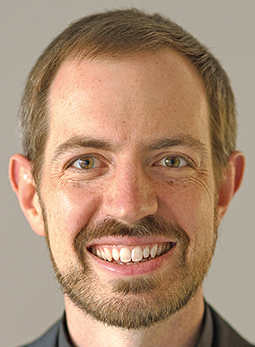
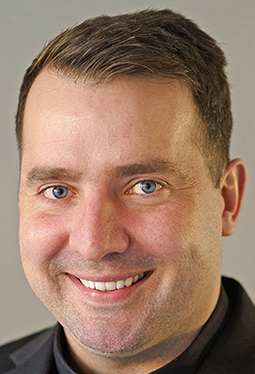
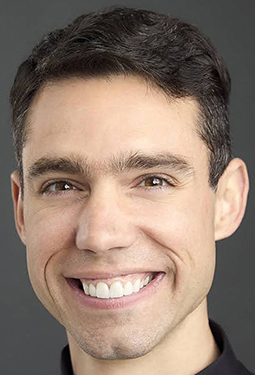
Emma Ackerman had a good Catholic upbringing, but the idea of consecrated religious life was never part of her future plans. That is, until the spring of her senior year … Why consecrated life matters: Religious sisters describe their lives as a response to God’s call to participate in His holiness
Subscribe to Read All St. Louis Review Stories
All readers receive 5 stories to read free per month. After that, readers will need to be logged in.
If you are currently receive the St. Louis Review at your home or office, please send your name and address (and subscriber id if you know it) to subscriptions@stlouisreview.com to get your login information.
If you are not currently a subscriber to the St. Louis Review, please contact subscriptions@stlouisreview.com for information on how to subscribe.

